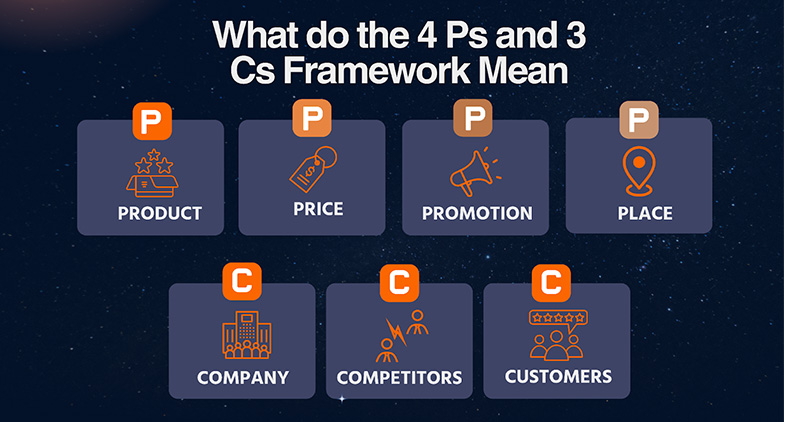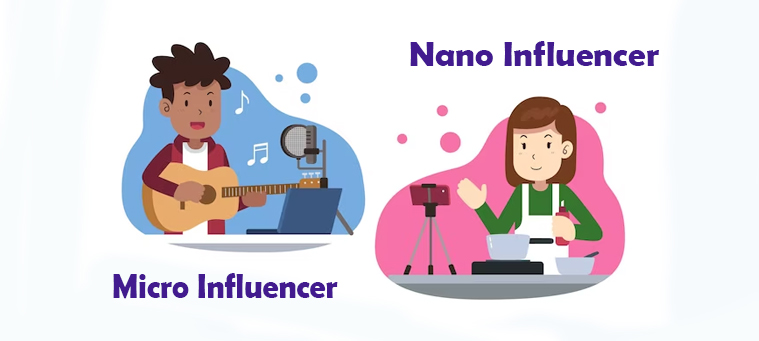Imagine you’re a magician trying to wow an audience. You need the perfect trick (product), a way to present it that makes people gasp (promotion), a venue where everyone can see the magic happen (place), and a price tag that makes them line up for more (price). But here’s the twist: you also need to consider the audience (customers), your own magical skills (company), and any rival illusionists who might steal the show (competitors).
The 4 Ps and 3 Cs of marketing are like a magician’s toolkit, helping businesses create a winning marketing strategy. Let’s break down each element and see how they work together to cast a spell on your target audience.

The 4 Ps of Marketing Mix
The 4 Ps, also known as the Marketing Mix, are the fundamental building blocks of any successful marketing strategy. These four pillars – Product, Price, Place, and Promotion – represent the key elements that businesses must carefully consider and align to achieve their desired outcomes.
Product
The product is the very essence of your offering, which includes not only the physical good or service but also its features, design, packaging, and branding. It’s the foundation upon which your entire marketing strategy rests. Imagine you’re launching a new line of eco-friendly water bottles. The product itself would include the bottle’s material (e.g., recycled plastic or stainless steel), its capacity, and any unique features like built-in filters or insulation. Additionally, the product includes the branding elements, such as the logo, color scheme, and overall aesthetic appeal.
Price
Pricing is a delicate balancing act that can make or break your marketing efforts. Set your prices too high, and you risk alienating potential customers; price them too low, and you might devalue your offering or struggle to turn a profit. The key is finding that sweet spot where the price accurately reflects the value you’re delivering while remaining competitive in the market. Let’s revisit our eco-friendly water bottle example: if you position your product as a premium, high-end offering with advanced features, you might price it higher than your competitors to convey that added value. However, if you’re targeting a more budget-conscious audience, a lower price point could be the way to go, emphasizing affordability as a selling point.
Place
The place, or distribution channel, refers to the methods and locations through which you make your product available to your target audience. This could include physical retail stores, online marketplaces, direct sales, or a combination of channels. Choosing the right distribution strategy is crucial for ensuring your product is accessible and convenient for your customers to purchase. Continuing with our water bottle example, you might opt for a multi-channel approach, selling your product through your own e-commerce website, as well as through major online retailers and select brick-and-mortar stores in eco-conscious neighborhoods.
Promotion
Promotion includes all the various tactics and channels you use to communicate your product’s value proposition to your target audience. This includes advertising (both traditional and digital), public relations, social media marketing, content creation, and even word-of-mouth campaigns. Effective promotion is all about crafting compelling messages that resonate with your audience and motivate them to take action. For our eco-friendly water bottle, you might launch a social media campaign highlighting the product’s sustainability features and partner with influencers or environmentally conscious organizations to amplify your message.
The 3 Cs of the Marketing Environment
While the 4 Ps focus on the internal factors that you can control, the 3 Cs – Customer, Company, and Competitors – represent the external forces that shape the marketing landscape and influence your product’s success.
Customer
At the heart of any successful marketing strategy lies a deep understanding of your target customer. This includes their demographics, psychographics, buying behaviors, pain points, and motivations. By truly knowing your customer, you can tailor your product offerings, messaging, and overall experience to meet their specific needs and preferences. For instance, if your eco-friendly water bottle is targeted at health-conscious millennials, you might emphasize the product’s stylish design and portability, while also highlighting its environmental benefits.
Company
The company factor includes your organization’s strengths, weaknesses, resources, and unique value proposition. Analyzing these elements can help you identify your competitive advantages, areas for improvement, and opportunities to differentiate yourself in the market. Let’s say your company has a strong reputation for sustainable practices and a commitment to reducing plastic waste. You could leverage this as a key selling point for your eco-friendly water bottle, emphasizing your brand’s credibility and authenticity in the sustainability space.
Competitors
Knowing and understanding your competitors is crucial for staying ahead in the game. By analyzing their products, pricing strategies, marketing tactics, and market positioning, you can identify gaps or opportunities to differentiate your offering. Additionally, monitoring your competitors can help you anticipate and respond to changes in the market landscape. If a major competitor launches a similar eco-friendly water bottle, you might need to adjust your pricing or promotional efforts to maintain your competitive edge.
How do the 4 Ps and 3 Cs Work Together?
The true power of these frameworks lies in their synergistic relationship. The 4 Ps provide a solid foundation for creating your marketing mix, while the 3 Cs offer valuable insights into the external forces shaping your market landscape.
By considering both the internal factors (represented by the 3 Cs) and the external factors (represented by the 4 Ps), businesses can develop a marketing strategy that is more likely to be successful.
For example, let’s say a company is developing a new fitness tracker. They would use the 3 Cs to understand their own capabilities (such as their manufacturing expertise and brand reputation) and their target customer (such as their desired features and price sensitivity). Then, they would use the 4 Ps to develop a product that meets customer needs (product), price it competitively (price), sell it in places where customers expect to find it (place), and promote it through channels that reach their target audience (promotion).
Benefits of Combining the 4 P’s and 3 C’s in Marketing
Combining the 4 Ps and 3 Cs of marketing offers several benefits for businesses:
- Increase customer satisfaction: By aligning your marketing efforts with the needs and preferences of your target audience (Customer C), you can deliver a superior customer experience that fosters loyalty and advocacy. For instance, if your eco-friendly water bottle caters to the preferences of health-conscious consumers by incorporating advanced filtration systems and BPA-free materials, you’re more likely to keep them satisfied and engaged with your brand.
- Competitive differentiation: Analyzing your competitors (Competitors C) and leveraging your company’s unique strengths (Company C) can help you carve out a distinct niche and stand out in a crowded market. If your eco-friendly water bottle is the only one made from sustainably sourced bamboo, for example, you can highlight this unique selling point to differentiate yourself from competitors using traditional plastic or metal materials.
- Improved marketing ROI: By optimizing your marketing mix (the 4 Ps) based on insights from the 3 Cs, you can allocate your resources more effectively, maximizing the impact of your marketing efforts and driving better returns on investment. If your target audience (Customer C) prefers to make purchases through online channels, you can focus your marketing budget on digital platforms and e-commerce initiatives, rather than expensive traditional advertising campaigns.
- Agility and adaptability: The ever-changing market landscape demands constant adaptation. By continuously monitoring and adjusting your strategies based on the interplay between the 4 Ps and 3 Cs, you can stay ahead of the curve and respond swiftly to emerging trends and shifts in customer preferences. If a new competitor enters the market with a disruptive pricing strategy, you can quickly adjust your own pricing and promotional efforts to maintain your competitive edge.
As you can see, the 4 Ps and 3 Cs are more than just buzzwords – they’re powerful frameworks that, when combined, can unlock the key to marketing success. By mastering these concepts and leveraging their synergy, you’ll be well on your way to crafting marketing strategies that resonate with your audience, outshine the competition, and drive tangible results for your business.
End Notes
The 4 Ps and 3 Cs framework offer a powerful toolkit for crafting a winning marketing strategy. By understanding both the controllable factors (4 Ps) and the external environment (3 Cs), businesses can create a product that resonates with their target audience, price it competitively, distribute it effectively, and promote it through the right channels. Remember, marketing is like a well-executed magic trick: it requires planning, creativity, and a deep understanding of your audience. So, grab your metaphorical top hat and get ready to amaze your customers!

